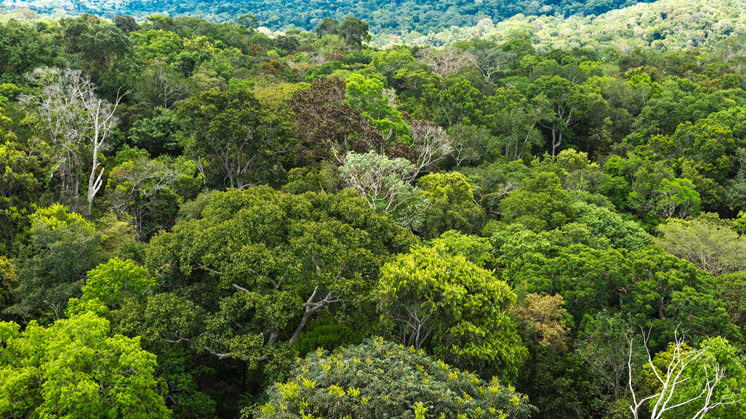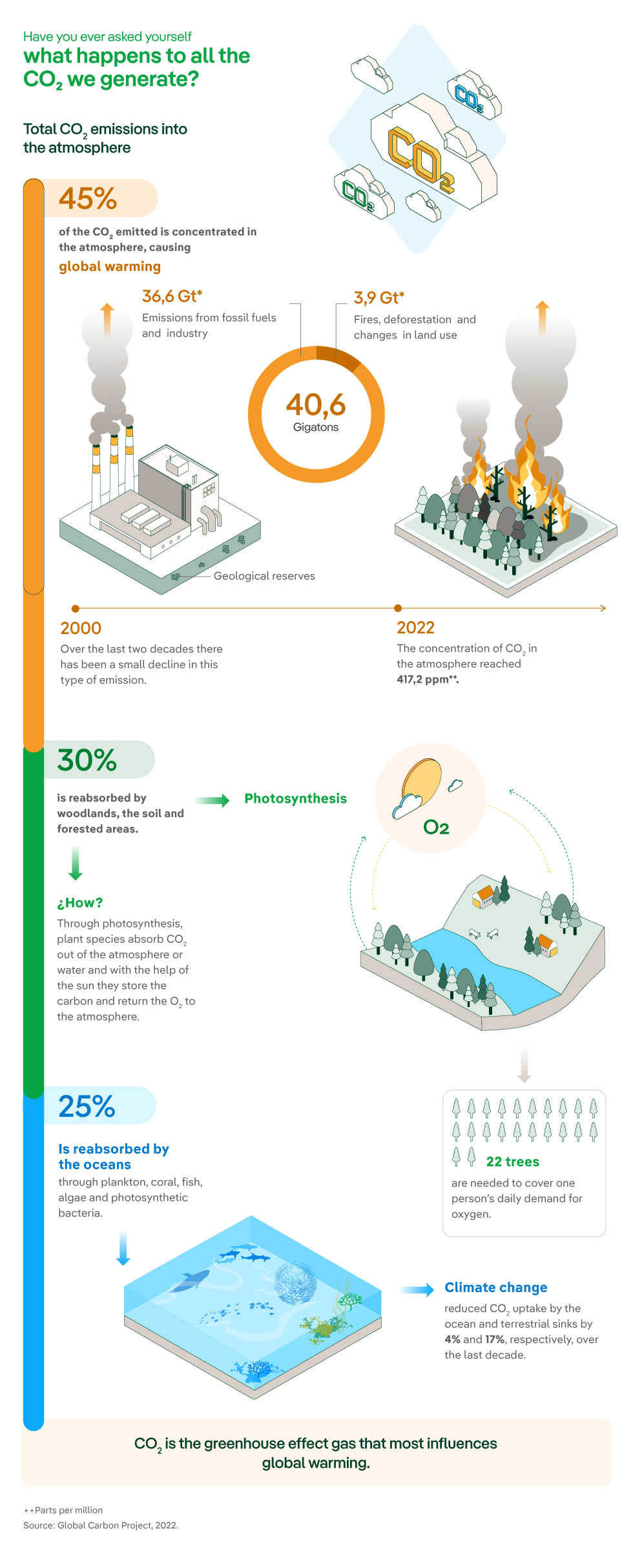Carbon sinks
Carbon sinks, a breath of natural oxygen
Since the Paris Agreement, one term is being used in all the conversations on climate change: mitigation. The aim is to reduce emissions of polluting gases into the atmosphere and one of the ways to do this is to increase the presence of carbon sinks on Earth.

Luckily, human beings are not the only ones trying to slow down the effects of global warming. Nature also has its own resources for attempting to keep the average temperature of the planet from rising. One of these is carbon sinks: natural deposits — oceans, forests and soils — that absorb the (CO2) in the atmosphere, reducing its presence in the air.
The importance of carbon sinks
These biological agents used to function unaltered until the carbon cycle, which had not changed for millennia, began to suffer the consequences of burning fossil fuels and the resulting accelerated increase in the concentration of CO2 in the atmosphere. This situation has not only continued over time but it has worsened: from the beginning of the Industrial Revolution to the present day, the concentration of CO2 in the air has gone from 278 parts per million (ppm) to more than 400 ppm, as the organisation Global Carbon Project (2022) warns us.
Faced with this disproportionate increase in greenhouse gas emissions (GGE) — in 2022 CO2 levels of 417.2 ppm were recorded in the atmosphere — and the main carbon sinks are only capable of removing 31 % of the carbon dioxide in circulation from the atmosphere.

External link, opens in new window.
SEE INFOGRAPHIC: Have you ever asked yourself what happens to all the CO2 we generate? [PDF]
However, despite the fact that human activities are continuing to wreak havoc on the planet's main natural sinks, as — deforestation has meant that many forests no longer act as sinks but as sources of emissions and the oceans are seriously affected by acidification —, if we make an effort to preserve them and increase them, their ability to retain carbon will continue to be very high.
- It is estimated that a little over 50 % of anthropogenic CO2 is absorbed by forests and oceans.
- The oceans were able to sequester 10.5 Gt of carbon per year during the decade 2012-2021 (26% of total CO2 emissions).
- According to the United Nations Food and Agriculture Organisation (FAO), sustainable reforestation and land management could lead to a reduction of 9 Gigatons (Gt) of CO2 by 2030.
- Land-based sinks sequestered a total of 11.4 GtCO2 per year during the decade 2012-2021, registering 1.4 GtCO2 per year more than during the 2000s.
Artificial carbon sequestration techniques
Although artificial carbon storage technologies are still far from meeting the demands of climate change, little by little new projects are appearing to capture CO2 artificially and then retain it using a variety of methods. Let's look at some examples:
![]() Capturing the CO2 in emissions from coal-fired power stations and injecting it deep under the surface of the Earth.
Capturing the CO2 in emissions from coal-fired power stations and injecting it deep under the surface of the Earth.
![]() Using geological carbon sequestration techniques that inject the CO2 into deep saline aquifers to produce large pockets of salt water.
Using geological carbon sequestration techniques that inject the CO2 into deep saline aquifers to produce large pockets of salt water.
![]() With the large-scale planting of trees and plants to trap CO2 and then burning them in biomass thermal power stations with chimneys that capture the dioxide and bury it in geological repositories.
With the large-scale planting of trees and plants to trap CO2 and then burning them in biomass thermal power stations with chimneys that capture the dioxide and bury it in geological repositories.
![]() Using fans to absorb the CO2 in the air with filters that are heated to 100º C by the heat generated by a recycling plant. This would result in pure CO2 gas that would subsequently be reused.
Using fans to absorb the CO2 in the air with filters that are heated to 100º C by the heat generated by a recycling plant. This would result in pure CO2 gas that would subsequently be reused.
![]() Placing algae near a light source that are capable of absorbing carbon dioxide and emitting oxygen.
Placing algae near a light source that are capable of absorbing carbon dioxide and emitting oxygen.
Carbon sinks offer real, significant assistance in slowing down climate change but, if we really want to achieve the commitment made in the Paris Agreement and keep global warming below 2º C, the only feasible solution is to lower emissions, abandon our dependence on fossil fuels and make a firm commitment to renewable energies.




